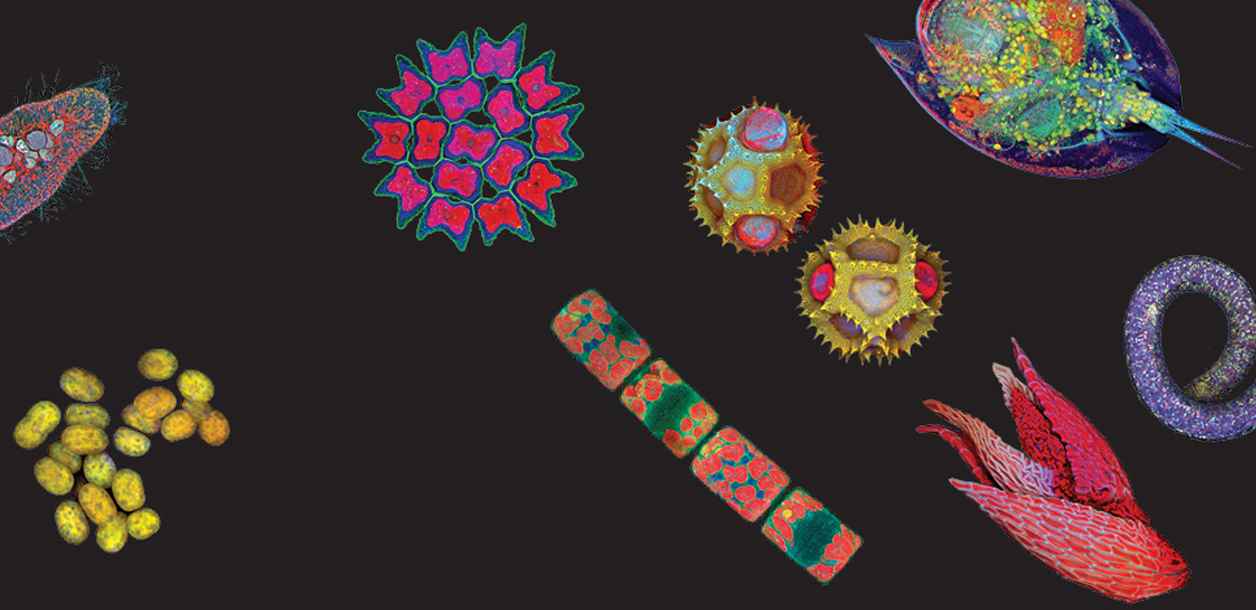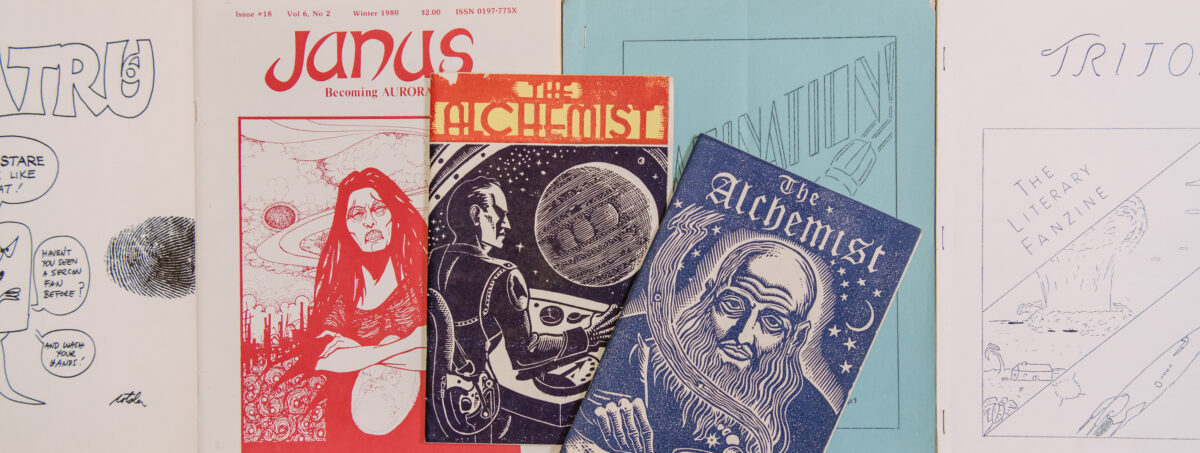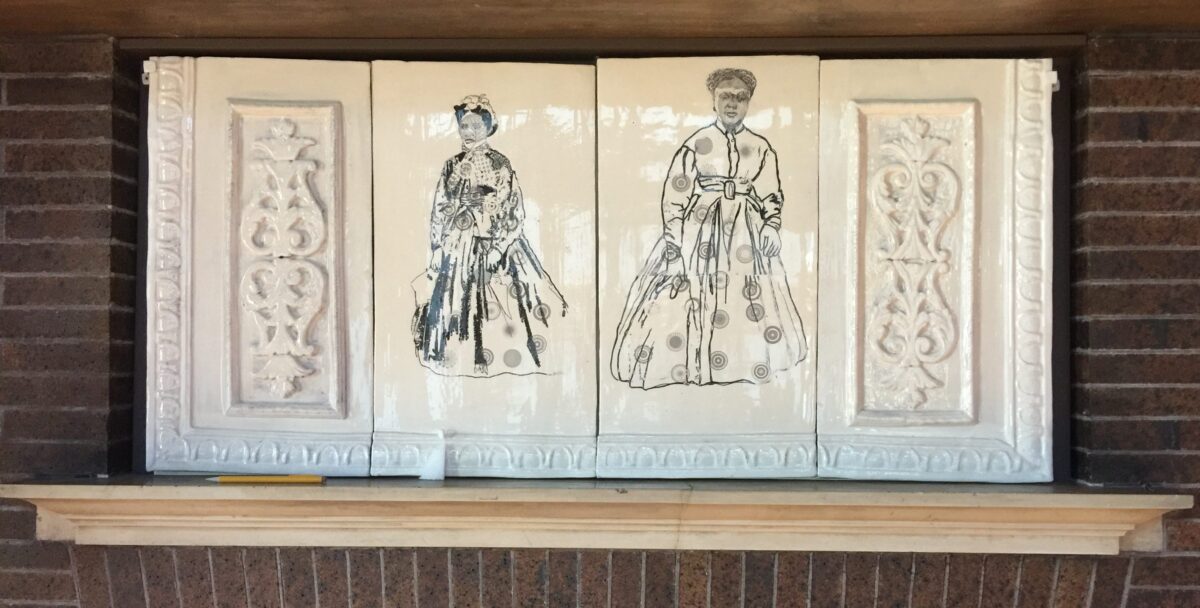Beneath the black and gold, and far beyond what might immediately catch your eye, lies a world of wonder. You just need to know where — and how — to look.
By Jenny O’Grady
Campus Microcosmos: Tagide DeCarvalho
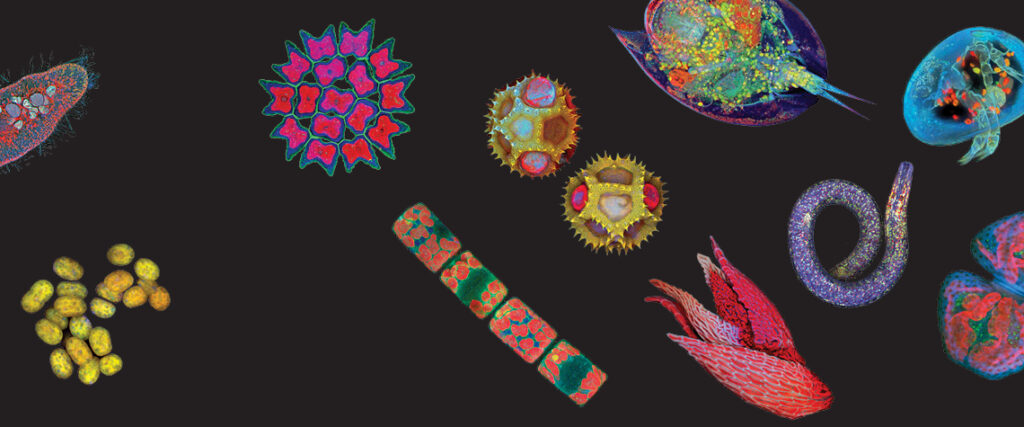
THE MURKY WATERS of Library Pond. The surface of a dandelion. The moss of a nearby tree. Wherever she looks, Tagide deCarvalho finds specks of wonder — and then amplifies them for all to enjoy.
As research assistant professor for biological sciences and manager of UMBC’s Keith R. Porter Imaging Facility, a center that offer specialized microscopy, deCarvalho has perfected her unique mix of art and science. First she collects fluorescent molecules from organisms that come about it naturally, and then adds them to non-fluorescent organisms to make their natural tones more spectacular when magnified.
The result is a stunning display — Sci-Art, she calls it — of microscopic worlds many of us would never otherwise see or appreciate. Her dandelion spores were recently recognized as an “image of distinction” in Nikon’s annual Small World microphotography competition.
“I used to do field work, and I’ve been to Australia and Hawaii, but until I looked at pond water here, I don’t even know that I’ve felt such wonder,” she says. “You don’t have to go somewhere exotic to find biodiversity and wonder. The inspiration is all here. There’s a whole world here that you just need to learn how to look for.”
Tiny Sand, Tiny Money, Tiny Time: Corrie Francis Parks
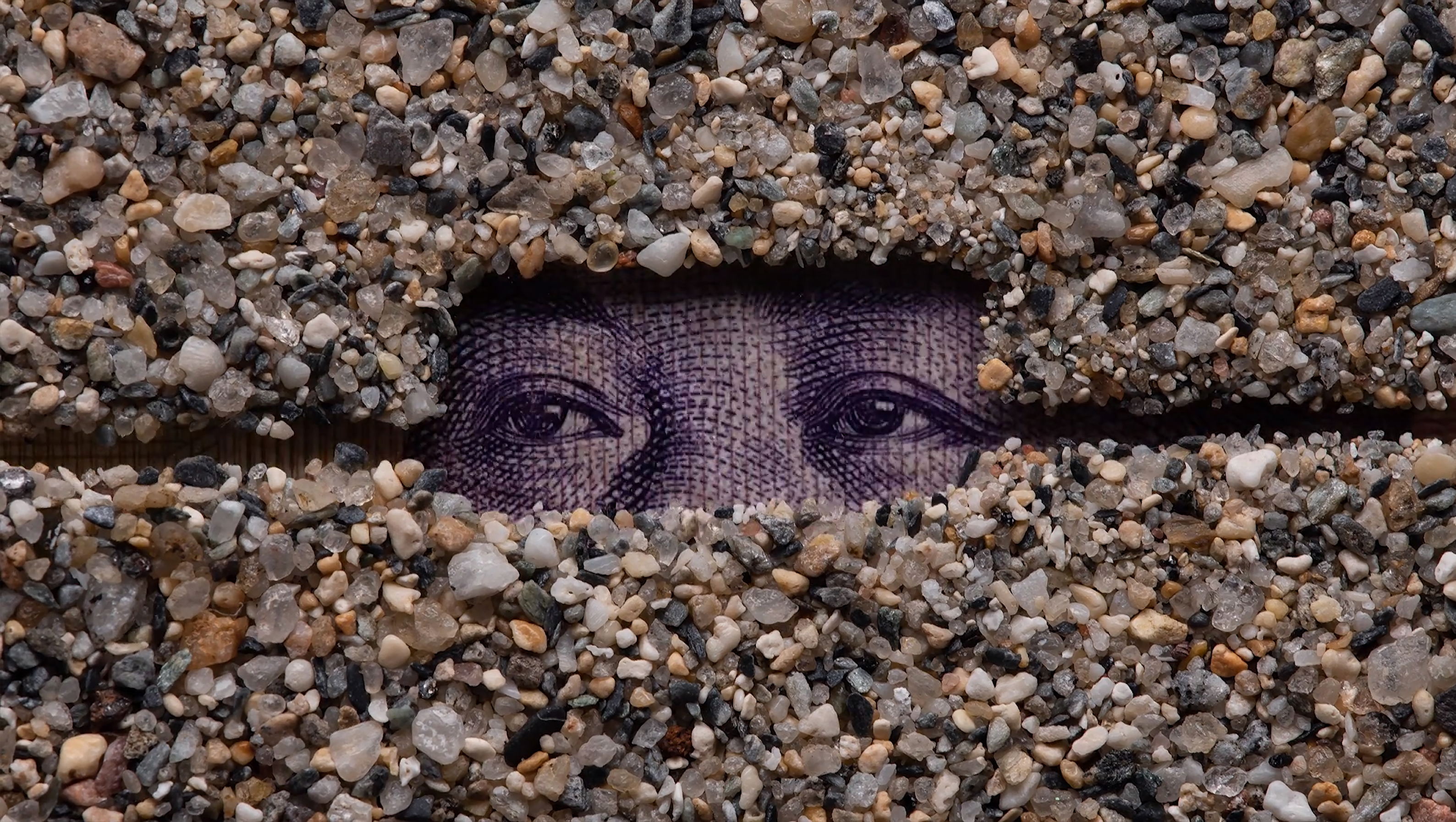
YEARS AGO, AS Corrie Francis Parks began hand animating sand, friends and family started sending her samples from around the world. It came from New Jersey, from Kuwait, from the Moab desert — little baggies and Tupperwares full, of all shapes and sizes and colors.
Later, when Parks, an assistant professor of visual arts, started magnifying paper currencies, she found herself with new supplies arriving in the mail, and new places and economic systems to study and think about.
Her most recent work, “Foreign Exchange,” an animated short about imaginary borders, combines both worlds, with individual pieces of sand journeying across frames dotted with inked winks of paper presidents.
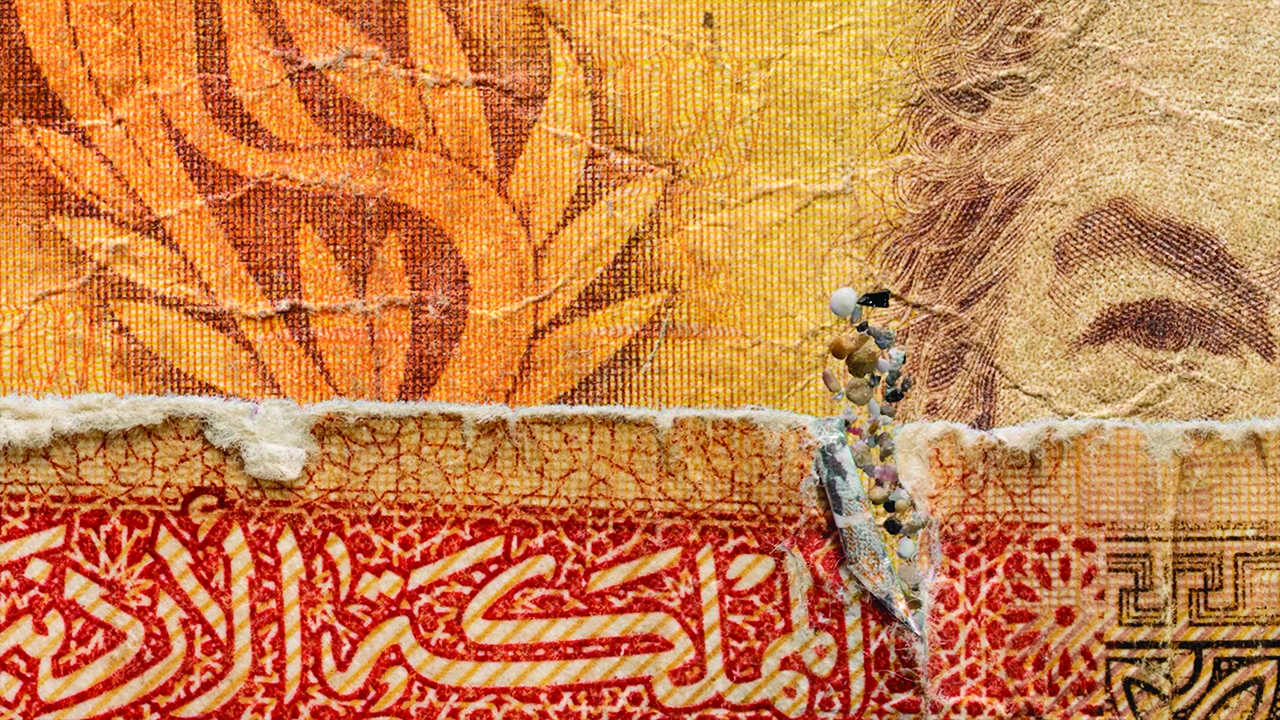
As small as the physical pieces are, they pale in comparison to the tininess of the time captured by the camera; as one second passes, 24 individual frames fly by. Parks invites viewers to make of it what they will, but it’s hard not to ascribe emotion and character to inanimate objects when they’re suddenly huge, dancing around each other.
“I think the really interesting part of what I’m doing right now is this idea of looking closely at things,” she says. “You start to see all of these little details, and I think that it’s a broader metaphor for the way we need to approach social problems, political problems. It’s about looking at the needs of the individual as well as this big, giant generalization.”
Microtechnological Marvel: Mike Adelstein ’96
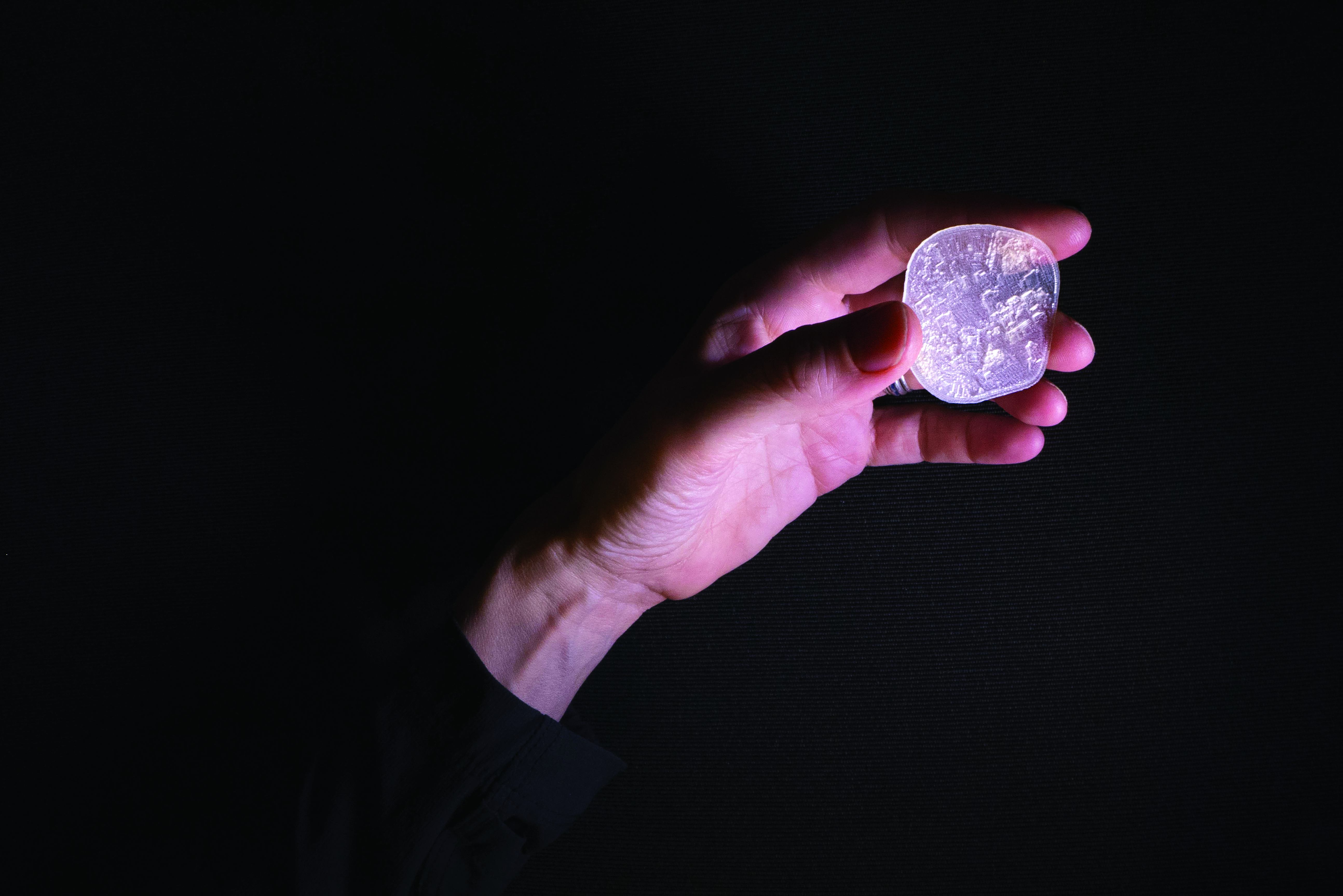
UMBC’S CAMPUS IS 512 acres, comprising more than 50 buildings, 3,000 trees, and more than 15,000 people on any given day of the semester.
In the palm of Mike Adelstein’s hand sits a campus 1/4,000th its actual size. His lifelines flow like estuaries beneath the 3-D printed plastic loop. There are no squirrels, nor miniscule french fries to feed them.
“It’s pretty cool, right?” smiles Adelstein ’96, biochemistry, president of Potomac Photonics, which specializes in digital and microfabrication. Whatever his clients need — tiny holes in tiny spaces, micro bonding with lasers, you name it — his team will dream up a way for it to happen.
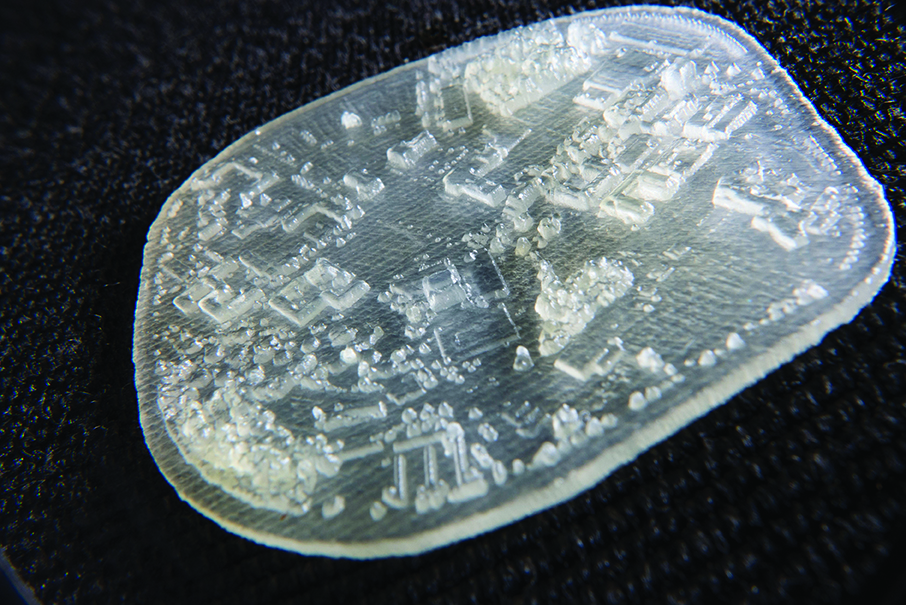
Several years ago, Adelstein worked with Ecosynth, an open source project at UMBC in which 3D models of terrain are created from photography taken by small radio-controlled aircraft. The main purpose is usually related to ecological study, but Adelstein couldn’t resist creating a model of his beloved alma mater.
And so he keeps it in his pocket, ready to impress visitors. It always does.
“This one’s small, but I can make it smaller,” he says, ready for a challenge. “We’re going to make it smaller.”
Hide and Seek
Can you match these tiny beautiful things to their descriptions? (See the answers at the end of the story.)


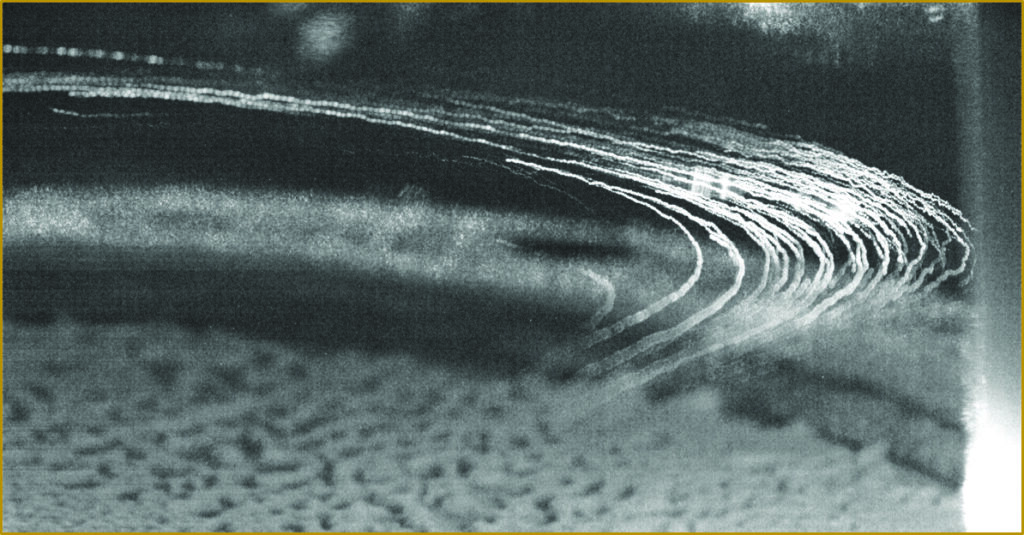
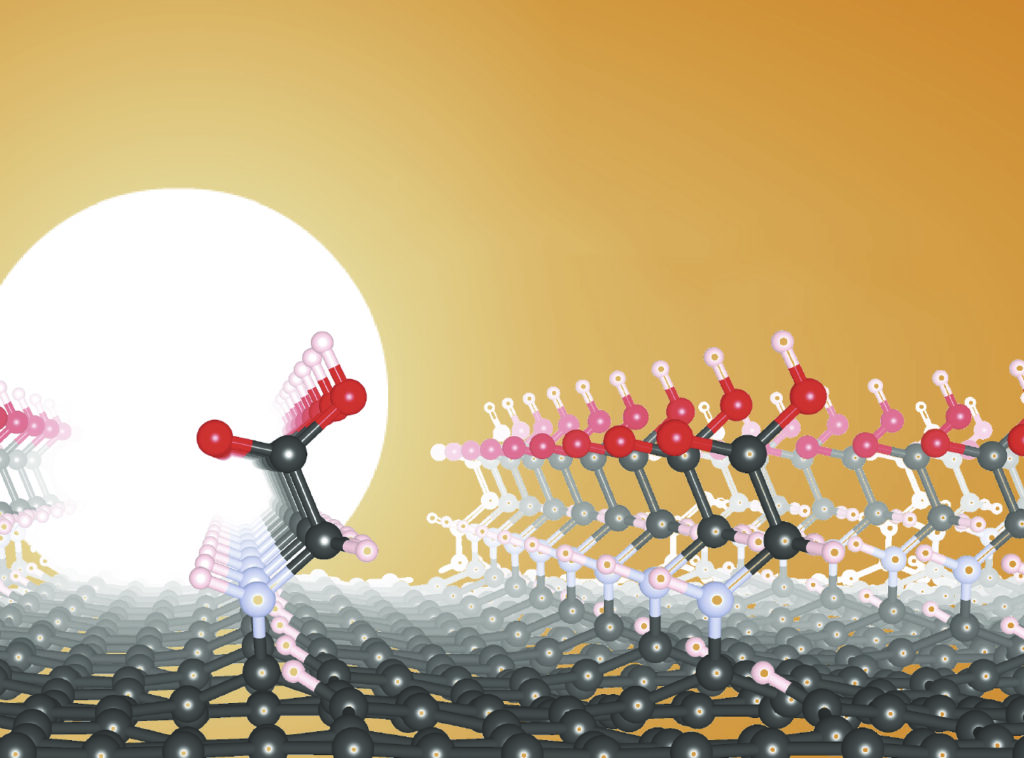

Tiny Descriptions
A. Tesserae, or roughly squared pieces of colored stone, make up the edge of a foot or hand in a 5th-6th-century mosaic that likely decorated a synagogue in Caesarea Maritima, Israel. Today, students in UMBC’s Ancient Studies program use artifacts like this from the Spiro Collection in their hands-on study of history.
B. Saturn in a box? It may seem like magic, but Carlos Romero-Talamas, assistant professor of mechanical engineering, is using plasma fields to make small particles levitate to simulate the sixth planet’s famous rings right here in his lab.
C. With a diameter ranging from about 0.1 to 0.5 nanometers, the average atom is a million times smaller than the thickest human hair. So, when we say that UMBC physicist Can Ataca is doing big things — developing cheaper ways of creating one-atom-thick materials — in very tiny ways, we really mean it.
D. You might need a stronger pair of reading glasses to understand UMBC’s oldest book, Biblia Sacra, a Vulgate bible from 1484. Interior pages show the original text and hand-painted letters, which you can see in person simply by making an appointment with Special Collections.
E. Can a parking lot ever be good for the Chesapeake Bay? It’s possible, according to senior research scientist Stu Schwartz of UMBC’s Center for Urban Environmental Research and Education (CUERE). The slow sponge-like draining of pervious concrete he studies can help prevent the rapid runoff of rainwater from traditional concrete that carries pollution into our waterways.
Answers: A5, B3, C4, D2, E1
Image #3 courtesy of Carlos Romero-Talamas. Image #4 courtesy of Can Ataca.
Tags: Fall 2018

